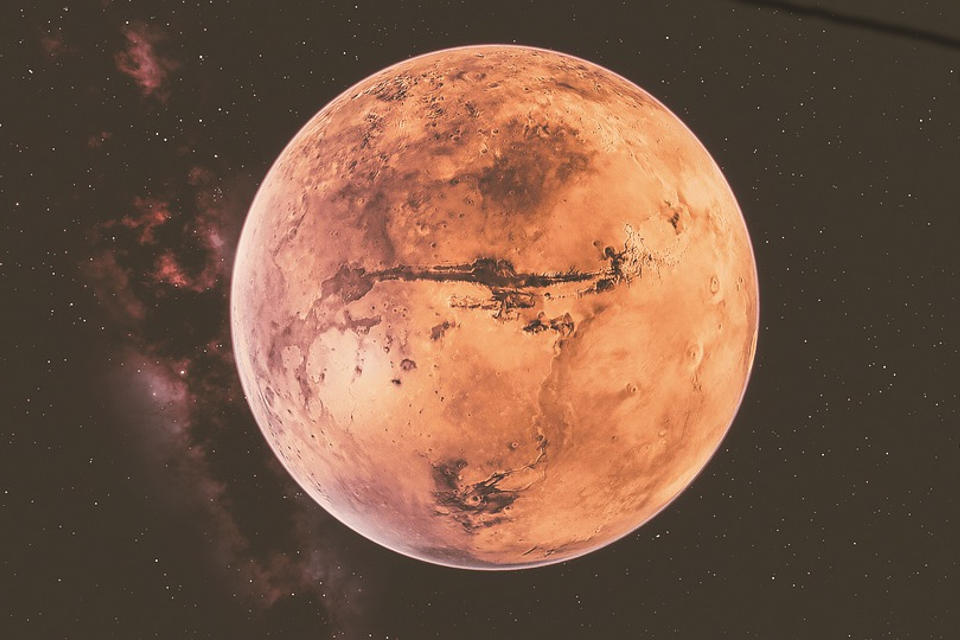Mars is one of our closest planetary neighbors, but how much do we know about it? We have discovered a treasure trove of knowledge about Mars over the past few decades through lander, rover, and orbiter missions. We have embarked on a mission of our own to collect fascinating facts about Mars, exploring what scientists have discovered about the climate of Mars, potential life on Mars, the moons of Mars, water on Mars, the history of Mars, and so much more. Suit up and strap in – it’s time to blast through these Mars facts!
General Facts About Mars

1. Mars is 4,220 miles in diameter. (source) This makes it slightly smaller than half the size of Earth, which is 7,926 miles in diameter.
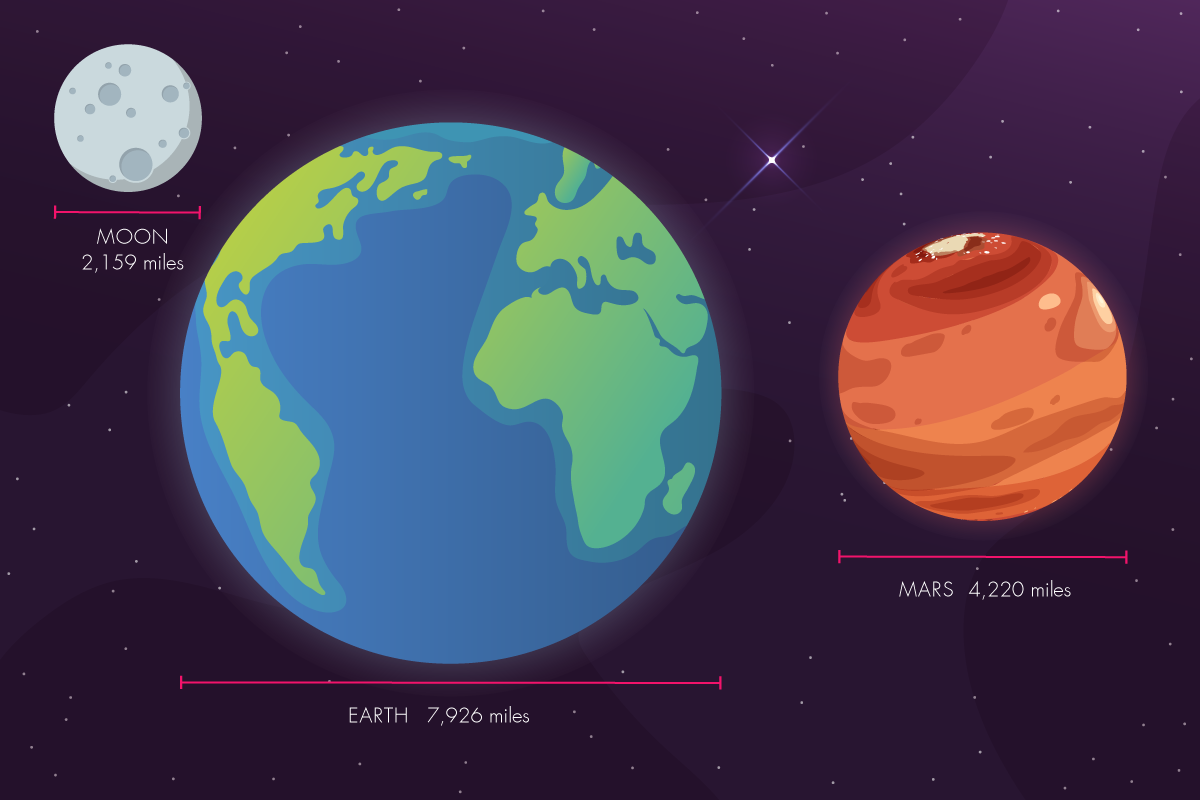
2. Mars’ gravity is .375 that of Earth. (source) This means that is you weighed 100 pounds on Earth, you would weigh about 38 pounds on Mars.
3. You can jump three times higher on Mars than on Earth. (source) This is due to the weaker gravity on Mars, as mentioned above.
4. Mars is the fourth planet from the Sun and the second-smallest planet in our Solar System. (source) At approximately 141.5 million miles away from the sun, it takes sunlight 13 minutes to reach Mars. Compare this to the approximately 8 minutes it takes to reach Earth.
5. Mars has two moons called Phobos and Deimos. (source) There is plenty of debate about where they originate from. Some believe they were pulled from an asteroid belt by Mars’ gravity. Mars’ moons are the smallest in the solar system. The larger of the two, Phobos, orbits only 3,700 miles above the surface of Mars, the closest of any other solar system moon. Earth’s moon is 238,900 miles away. Phobos is predicted to collide with Mars within the next 30 million years.
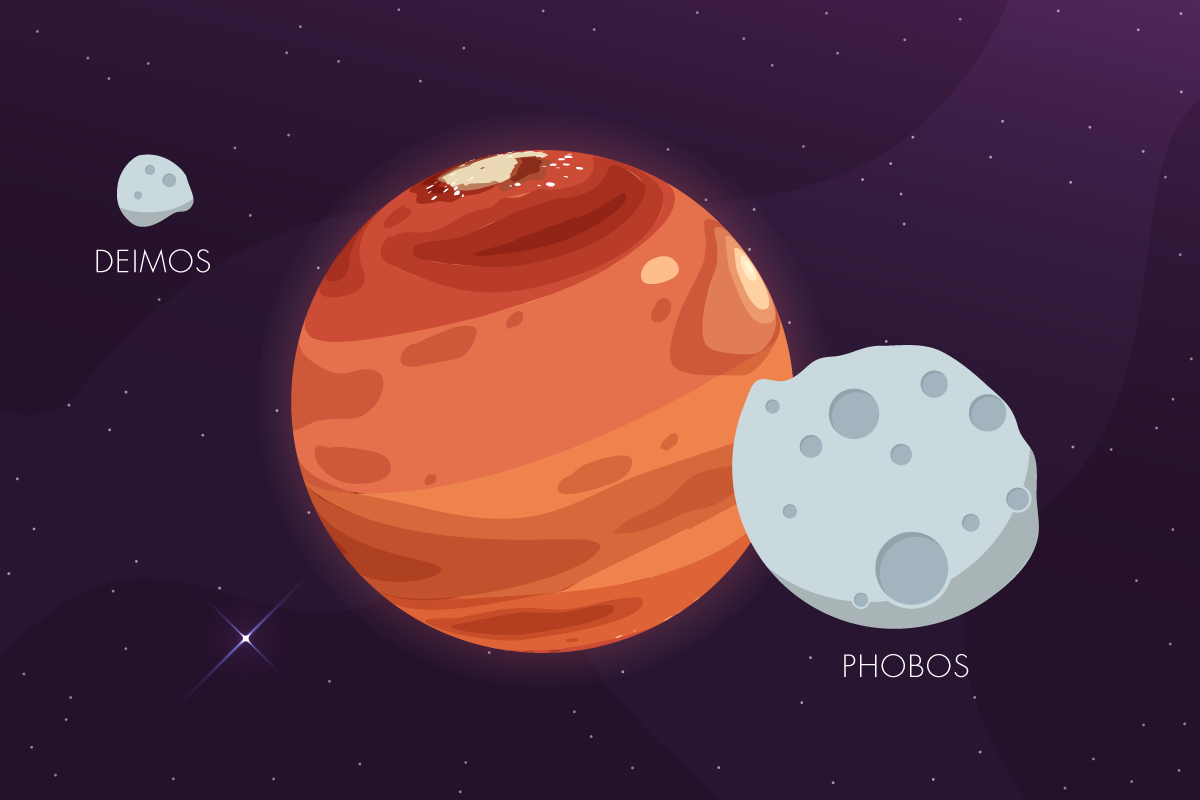
6. A year on Mars is 687 Earth Days. (source) That is the amount of time it takes Mars to complete a full orbit of the Sun. Mars and Earth have a similar tilt of axis, so their days are close in length.
7. Mars currently has two rovers (Curiosity and Perseverance), one lander (InSight), and one helicopter (Ingenuity) exploring the surface. (source) The Perseverance rover is the largest, most advanced rover sent by NASA to another planet, which touched down on February 18th, 2021 after a 203-day journey over 293 million miles. You can ride along with the Perseverance’s exploration through NASA’s dedicated blog.

Facts About the Climate of Mars
8. Mars is a dusty, cold, desert-like world with a thin atmosphere. (source) There are seasons, polar ice caps, extinct volcanoes, canyons, and evidence of a more dynamic and active planet in the past.
9. The average temperature on Mars is about -81 °F. (source) Temperatures range from -220 °F in winter at the poles to 70 °F during the summer around lower latitudes.
10. Mars’ atmosphere is comprised of around 96% carbon dioxide. (source) There are also traces of argon, nitrogen, oxygen, and water vapor. Could we breathe on Mars? No! There is not nearly enough oxygen on Mars for humans to be able to breathe unassisted.
11. Mars is prone to massive dust storms that can engulf the entire planet. (source) In January 2022, a dust storm spreading twice the size of the United States led to some of NASA’s Mars missions having to be shut down until it died down. Recent research indicates these dust storms are triggered by the dramatic heat imbalances between seasons and even just day and night.

12. Mars once had oceans and a thicker atmosphere, which dried up over 3 billion years ago. (source) Earth’s oceans are responsible for climate equilibrium, so many scientists wonder if Mars is a possible preview of what might happen to Earth if it continues to heat up.
Facts About the Geology of Mars
13. The scientific study of the geology of Mars is called areology. (source) It is derived from the Greek god Ares, known to the Romans as Mars. Ares is the god of war and courage.
14. The geological history of Mars is divided into three periods, each named after a region: Noachian, Hesperian, and Amazonian. (source) There is also the Pre-Noachian period which spanned from 4.5 – 4.1 billion years ago, the earliest period of Martian history. Not much is known about this time, but scientists believe Mars endured an extremely high rate of bombardment. This lead to the formation of the rugged southern highlands and the flat northern plains, two distinct halves of the planet.
15. The distinct rust color Mars is known for comes from the iron-rich minerals in its regolith, or the loose dust and rock covering the surface. (source) Earth’s soil is also a type of regolith, although it is loaded with organic content. The iron minerals in Mar’s soil oxidizes, creating a red hue.
16. The tallest mountain and volcano in the Solar System is on Mars. (source) At around 16 miles high, Olympus Mons is three times as tall as Mount Everest. With a diameter of 374 miles, it covers the same amount of land as the U.S. state of Arizona. The volcanoes on Mars can get this large because there are no plate tectonics to drag them away from hot spots, allowing them to stay in volcanically active zones and grow bigger and bigger.

17. Mars has a crust, mantle, and core, much like other terrestrial planets. (source) Although precise measurements have not yet been achieved, scientists have made predictions based on the depth of Valles Marineris. Valles Marineris is a vast canyon system that spans 2,500 miles across the Martian equator (that makes it long enough to span the United States)! Mars is estimated to have a crustal thickness between 20 miles and 45 miles. This is significantly thicker than Earth’s 9 mile to 12 mile crustal thickness.
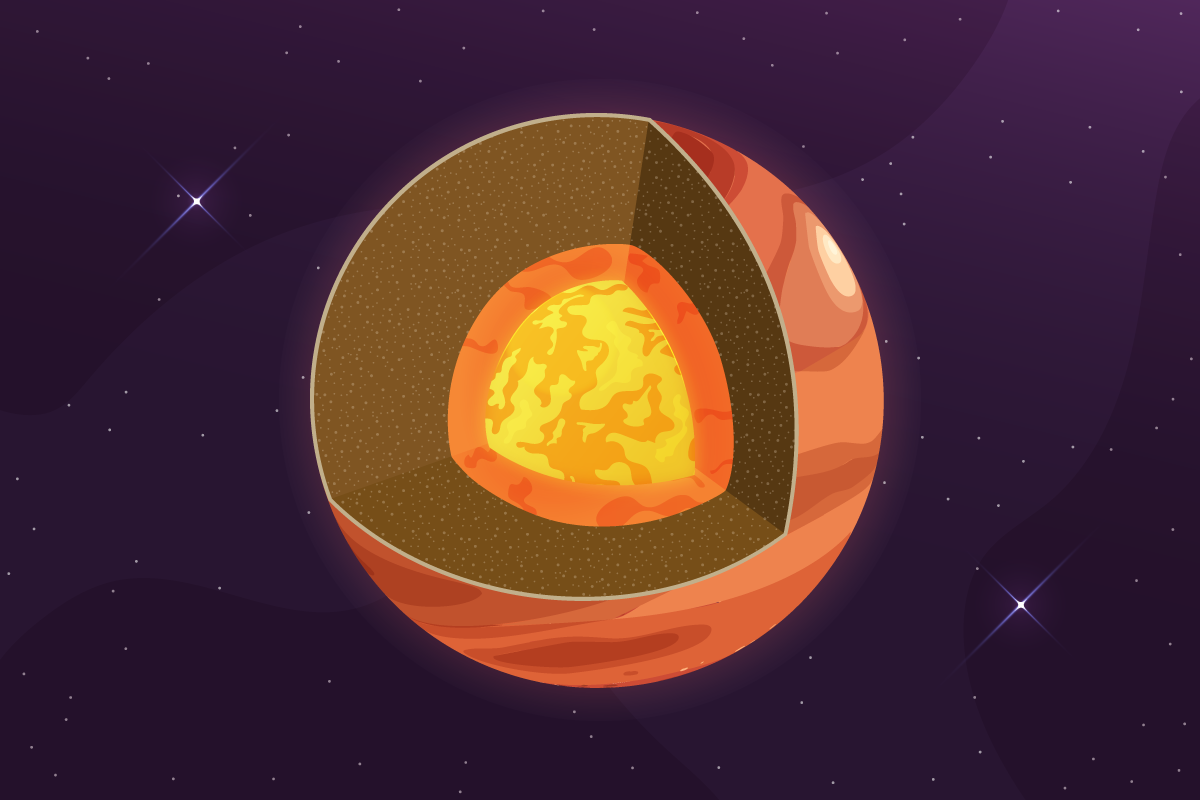
18. Valles Marineris is the largest canyon system in our solar system. (source) It is 10 times longer, 20 times wider, and five times deeper than the Grand Canyon!
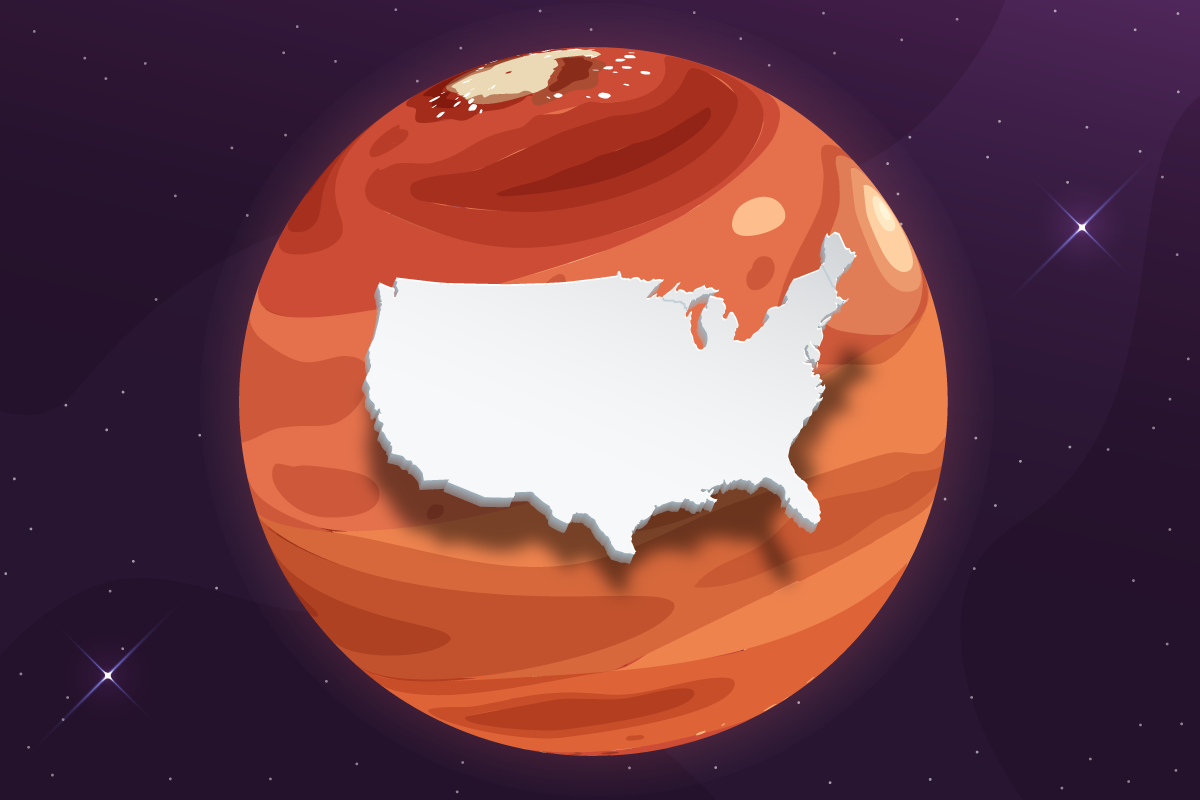
19. You can see pieces of Mars at the American Museum of Natural History in New York City. (source) They came from the Nakhla meteorite which made impact in Egypt in 1911. It ws the first meteorite to suggest signs of aqueous processes on Mars.
20. Mars has a distinctive 620-mile dark patch known as the Syrtis Major Planum. (source) The darker color comes from basaltic volcanic rock and relative lack of dust.
Facts About the History of Mars
21. Mars formed at the same time as our solar system 4.6 billion years ago. (source) The rocky, terrestrial planets – Mercury, Venus, Earth, and Mars – formed within the inner, hotter circle of the solar system where metals and silicates were concentrated. Since most of the gas and ice of the solar system could not exist as solids at the high temperatures closer to the sun, the planets there formed from heavier materials colliding, breaking, and aggregating.
22. The ancient Romans named Mars after their god of war. (source) They found the reddish color to be reminiscent of blood. Other civilizations had names that referenced Mar’s crimson hue as well. The Babylonians called Mars “Nergal”, who was their god of war, death, and disease. The Egyptians called Mars “Har Decher”, which translates to “The Red One”. In Hebrew it is “Ma’adim”, which translates to “the one who blushes”.

23. In 1609, Galileo Galilei became the first person to observe Mars with a primitive telescope. (source) This also made him the first person to use a telescope for astronomical purposes.
24. Mars was once believed to have intelligent life. (source) In 1877, astronomer Giovanni Virginio Schiaparelli discovered channels on Mars that he called “canali”. “Canali” means channels, but it was mistranslated to “canals” which led people to believe that intelligent life had constructed them. In 1894, astronomer Percival Lowell further “confirmed” this when he observed Mars from his private observatory. He stated that the straight lines were canals built by Martians to carry water from the polar caps. Modern mapping has determined these “canals” were merely optical illusions.
25. The first ever photograph of Mars was captured in July 1976. (source) It was obtained by Viking 1, the first spacecraft to successfully land on Mars.
26. The first-ever robotic rover to land on Mars was the Mars Pathfinder. (source) The Mars Pathfinder launched on December 4th, 1996 and landed on July 4th, 1997. It discovered rounded pebbles and other surface characteristics that indicated the presence of running water in the past. It also found the airborne dust to be magnetic.
27. There have been 48 missions to Mars starting from 1960. (source) Only about half of them have been successful. It operated on Mars’ Chryse Planitia (a smooth circular plain in the northern hemisphere) for over 6 years and collected the first Martian soil sample using a robotic arm and a special biological laboratory. While it did not discover signs of life as was intended, it helped characterize Mars as a frigid planet with volcanic soil, a thin and dry carbon monoxide atmosphere, and shocking evidence of ancient river beds and colossal flooding.
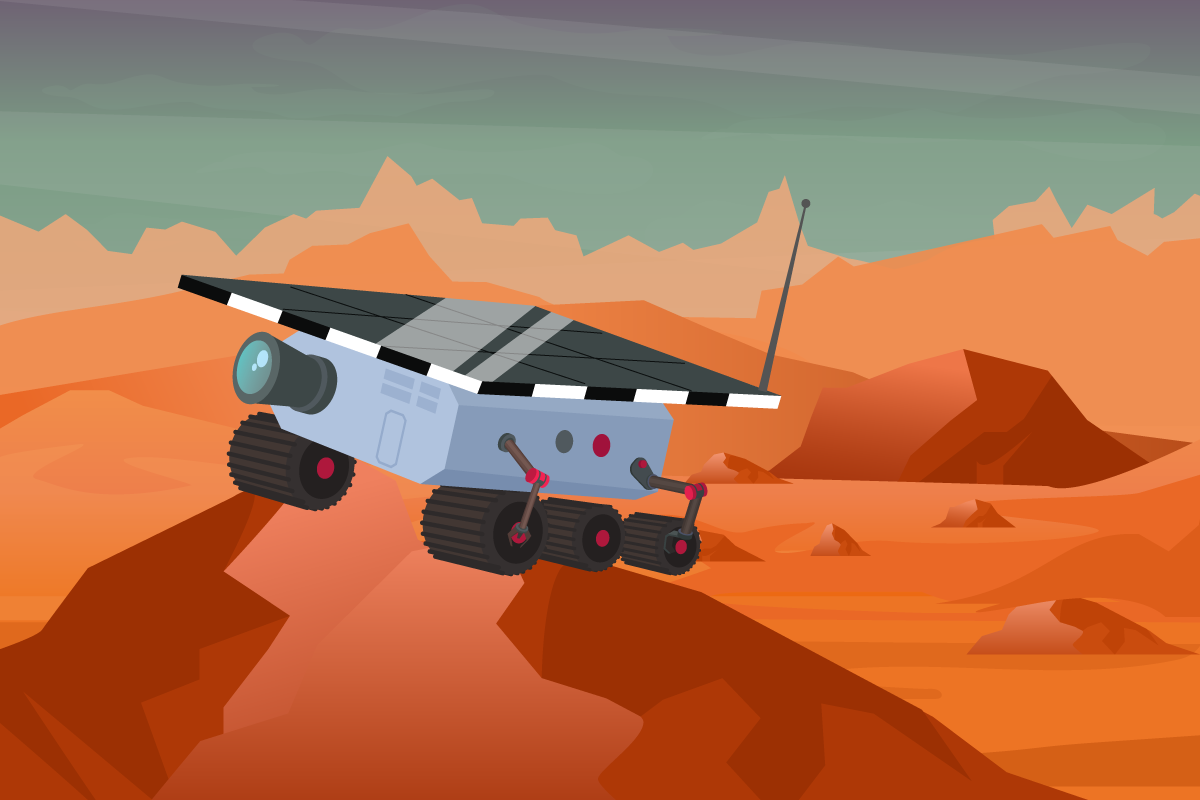
Facts About Water on Mars
28. There have been recent discoveries that support the existence of liquid water beneath the south polar ice cap of Mars. (source) Professor Neal Arnold from Cambridge’s Scott Polar Research Institute, stated that: “The combination of the new topographic evidence, our computer model results, and the radar data make it much more likely that at least one area of subglacial liquid water exists on Mars today, and that Mars must still be geothermally active in order to keep the water beneath the ice cap liquid.” You can read the full study here.
Facts About Life on Mars
29. There have been times in the ancient past of Mars where conditions may have been suitable for life. (source) While no evidence of life has been discovered yet, there were once habitable environments on the surface of Mars. For example, the Curiosity rover found that over three billion years ago, Gale crater was a lake that may have been suitable for sustaining life. The Perseverance rover is equipped with instruments to extract information related to past and present life, so who knows what discoveries the future holds.
30. The first Mars samples are set to return to Earth in 2033. (source) Perseverance dropped its first rock sample at the retrieval point in December 2022. It is believed that only by studying these rock samples back on Earth will the question of life on Mars be answered.
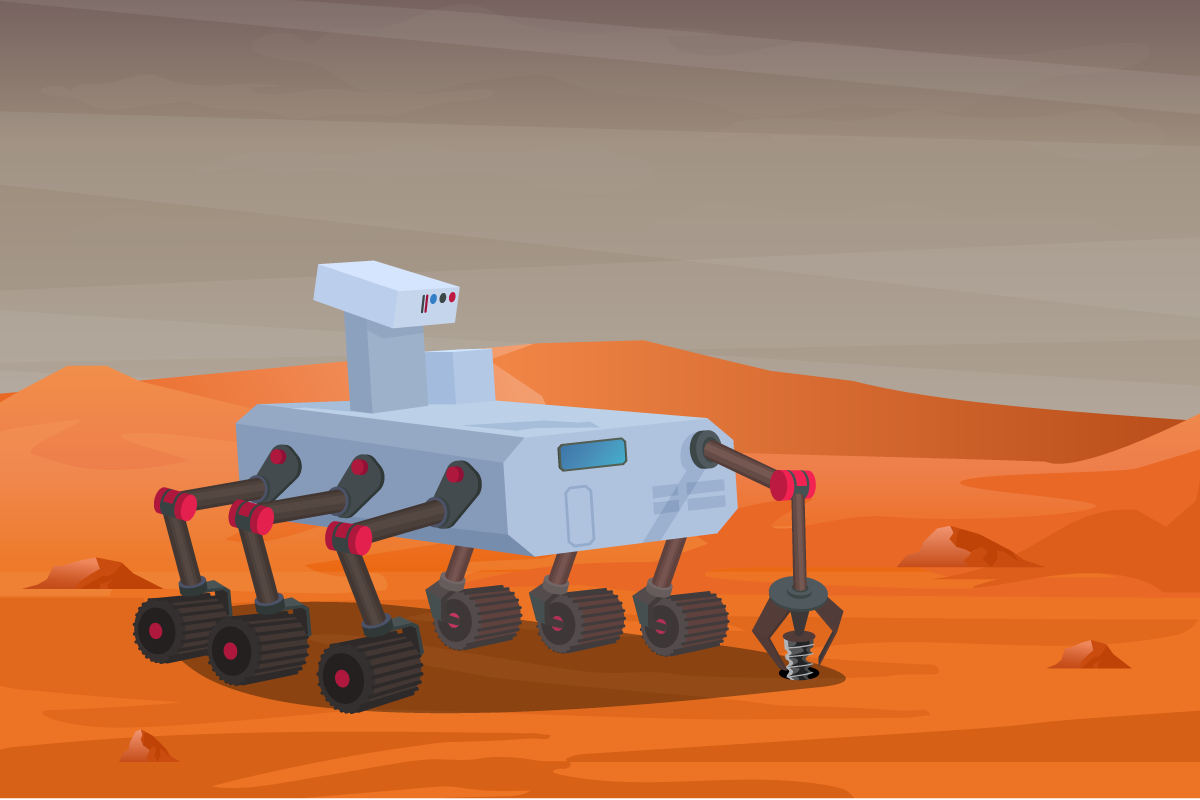
Did you enjoy learning about Mars? Well, we have a lot more space facts where that came from! Or you can learn about these other planets right now:

